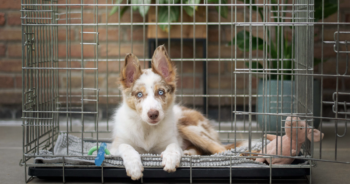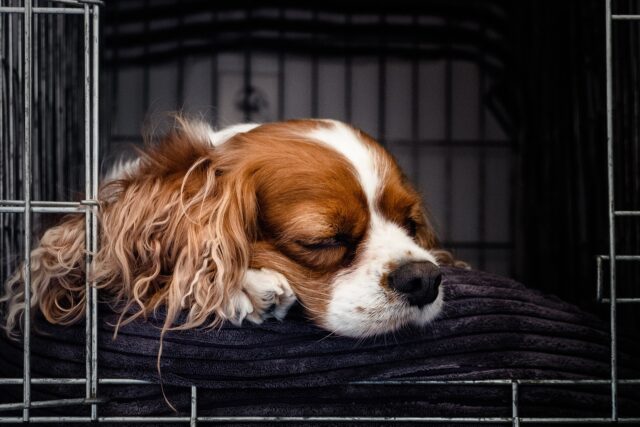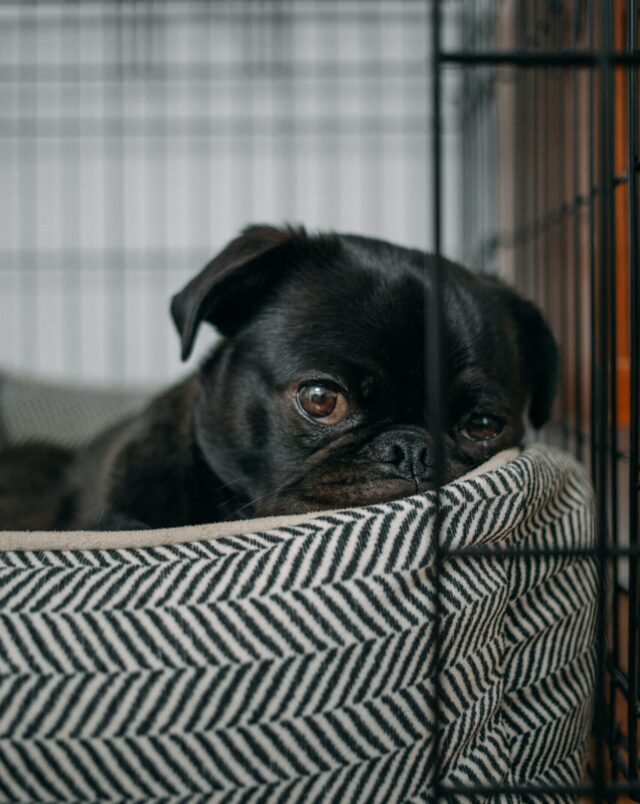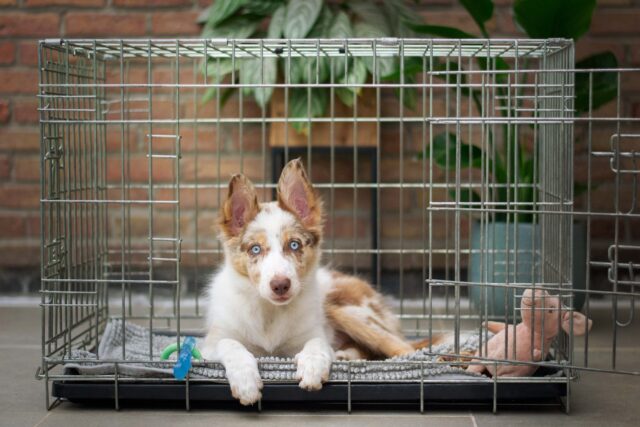
iHeartDogs is reader-supported. When you buy via links on our site, we may earn an affiliate commission at no extra cost to you.
Crate training is one of the best things a dog parent can do. It gives your dog a safe, secure place to be when you can’t watch them. It’s handy for potty training, obedience classes, and travel. Keep reading to learn our top 10 tips on crate training.
Are you confused when it comes to training? You don’t have to hire a trainer to take over. SpiritDog can guide you and your pup through the training process and help you have the well-behaved pup you know your dog can be. Check out their website to learn more about how SpiritDog is helping humans and their pups bond over training!
#1 – Start ASAP
As soon as your dog comes home, start crate training. It will make it easier to establish the crate as the “norm” the sooner you implement it. Both puppies and adult dogs can benefit from crate training.

#2 – Pick an Appropriate Crate Size
For help with potty training, make sure the crate isn’t too big. If it is, your puppy may go to the bathroom in one corner and still sit comfortably on the other side. Yet, there should also be enough room for your pup to stand up, turn around, and lie down comfortably.
#3 – A Positive Place
The crate is supposed to be a positive place. It should only be associated with good things so your dog will like being in it. So, never use the crate as a punishment or a “time out” area after your dog misbehaves. Instead, give them a treat, chew, or toy when they’re in the crate to create positive associations.

#4 – Leave the Door Open
Leave the crate out with a comfy bed or blanket inside. Keep the door open so your puppy always has access to it. This helps establish it as their “den.” All of my dogs choose to go in their crates when they take naps. This is good because it means they see it as a safe and cozy place.
#5 – Start with Short Sessions
Don’t just plop your puppy in the crate and expect them to be good for five hours. Start by shutting the door and rewarding your dog for being quiet while in the crate. Then, let your dog out before they have a chance to cry. For some puppies, it might only be a second or two. You will have to gradually build up duration. But remember, avoid leaving your pup in there for longer than their small bladder can handle!

#6 – Work on Settling in the Crate
I teach all my dogs to lie down in the crate to help them relax and settle. This is an offered behavior (meaning no cue is given by you). Do this by rewarding your dog heavily whenever they choose to lie down.
#7 – Don’t Let Them Out if They Cry!
One of the biggest mistakes dog parents make is giving in to those pitiful cries. We know it’s sad, even heartbreaking, but if you let your dog out when they do it, you are teaching them that to get out, all they have to do is make a fuss. Which, of course, is the opposite of what you want. So, even if you know your puppy needs to go to the bathroom, wait until they’re quiet, give them 3-5 seconds, and if they’re still quiet, then let them out.

#8 – Feed Your Dog in Their Crate
Feeding your puppy in the crate creates a good association for your pup, which helps make crate training easier. You can leave the door open at first or shut it and then let your puppy out when they’re done, provided they’re quiet. You can use their usual food bowl or put the food in a toy, like a KONG, so it will last longer.
#9 – Put Them In For Short Periods When You’re Home
This is another point that often gets overlooked. For many dogs, it’s easy to go in the crate and be quiet when you leave. After all, you’re not there. But it’s a lot harder if you and/or other household pets are walking by their kennel. Your dog might wonder, “you’re out, why can’t I be?” Avoid this by occasionally putting your pup in their crate when you’re home. Reward them for being quiet and let them out before they get to the point where they have “had enough.”

#10 – Invest in an Automatic Feeder
Automatic treat dispensers will allow you to treat your dog for being good in their crate, even if you’re not in the room. Some feeders reward a dog for not barking, so they can get treats even when you’re not home!
Consider Online Training!
Training doesn’t have to be a chore. Let SpiritDog help you make training time a fun, productive bonding experience between you and your best friend! Whether you want to work out bad habits or strengthen good canine manners, SpiritDog can help guide you!
SpiritDog’s courses are developed by real trainers who know that the best teacher for your dog is the person they love most in the world – you! Even if you’ve never trained before, you can get better behavior out of your pup with SpiritDog’s guidance. With so many happy pet parents who have used their courses, SpiritDog guarantees 100% satisfaction!
SpiritDog offers over 17 science-based courses, as well as 12 free bonus courses to get you and your pup bonding and building better behaviors. Their Tackling Reactivity Bundle can help you keep your pup safely by your side and help anxious or reactive pups keep calm. For new pet parents, the Ultimate Puppy Program can help you start your pup off on the right paw from the beginning. Those who want to teach their pets great behaviors at any age, check out their Ultimate Masterclass Bundle. Whatever you need, SpiritDog can help keep your dog safe, happy, and well-behaved!
iHeartDogs is reader-supported. When you buy via links on our site, we may earn an affiliate commission at no extra cost to you.
The post Top 10 Tips On Crate Training A Dog appeared first on iHeartDogs.com.
via Whisker Therapy
